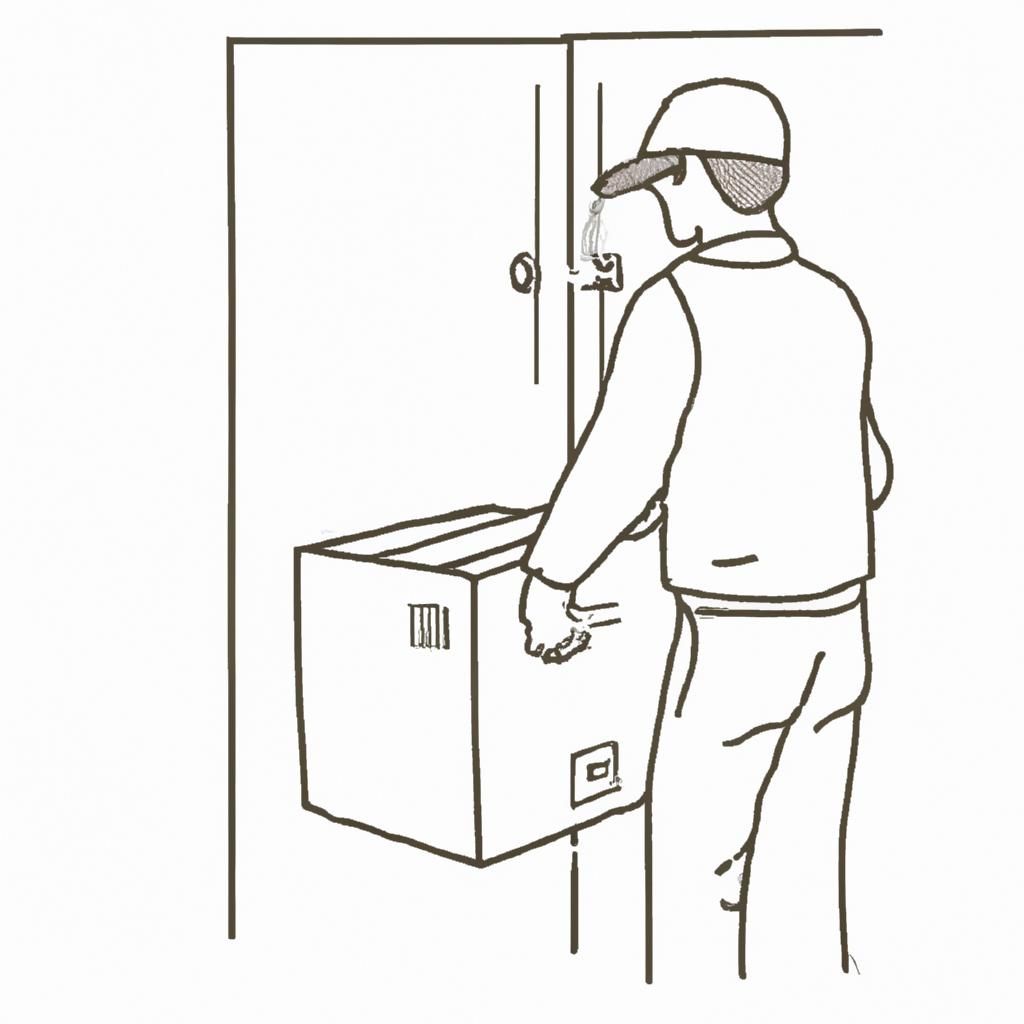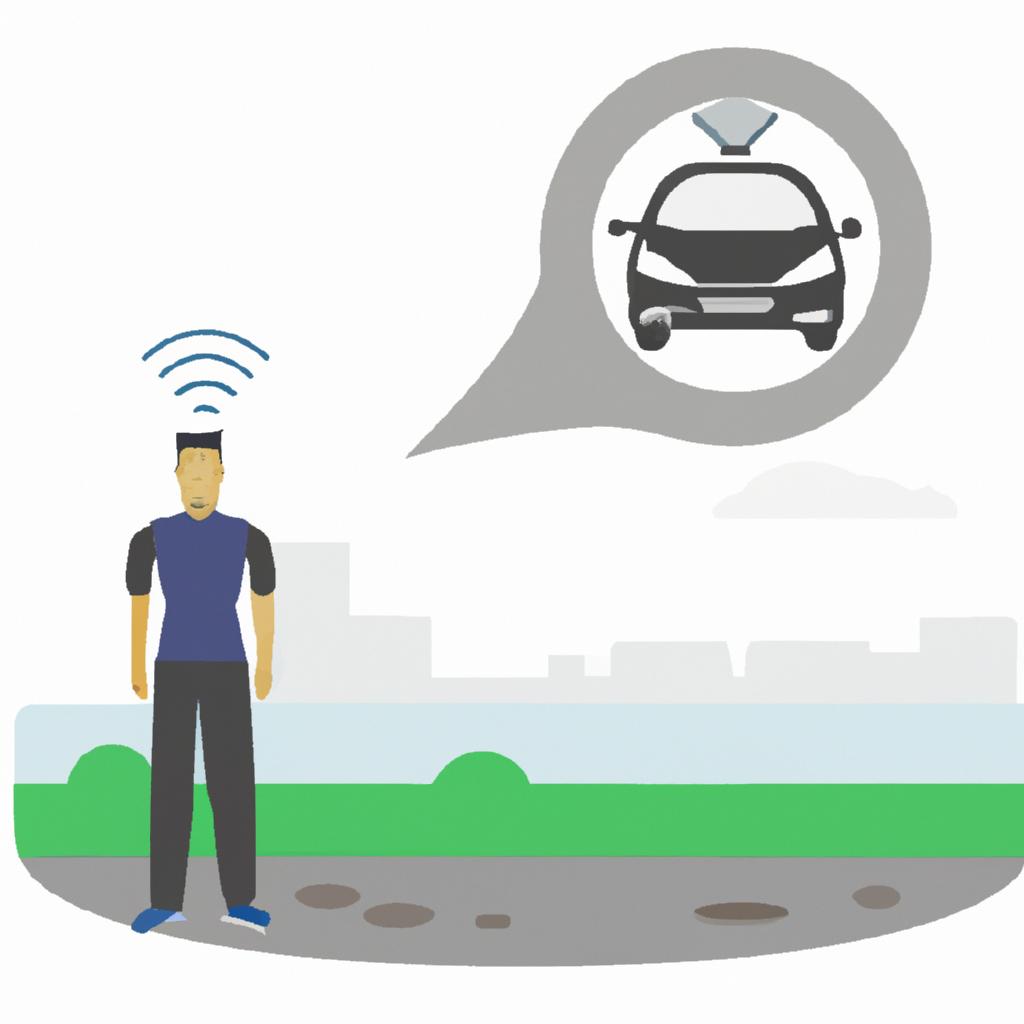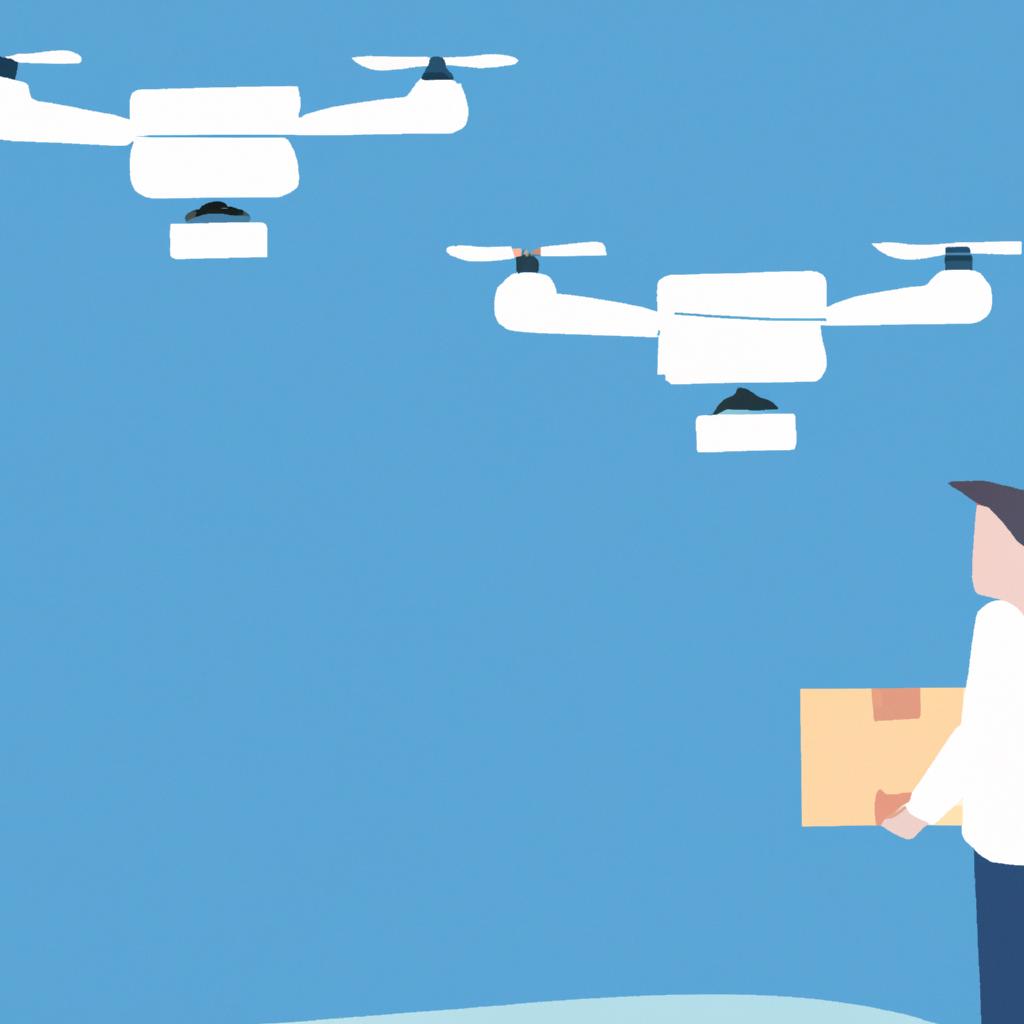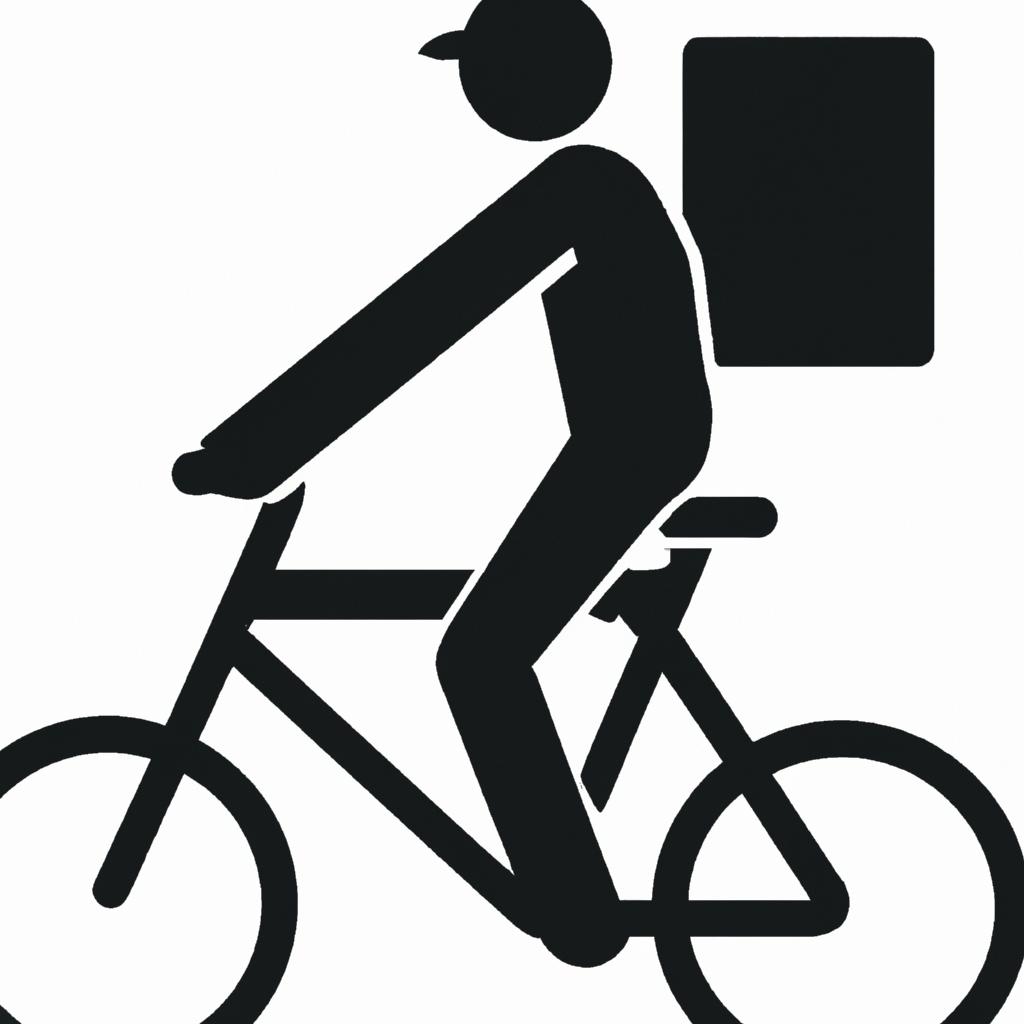E-commerce Integration in Transportation and Logistics: Last Mile Delivery Explained


In recent years, the rise of e-commerce has revolutionized the way goods are bought and sold. With a click of a button, consumers can now purchase products from around the world and have them delivered to their doorstep. This convenience has led to tremendous growth in online retail sales, but it has also posed significant challenges for transportation and logistics companies. As a result, there is an increasing need for effective integration of e-commerce platforms with transportation systems, particularly in the last mile delivery process.
For instance, consider the case of a major online retailer experiencing rapid expansion in its customer base. The company’s success relies heavily on delivering orders quickly and efficiently to customers’ homes. However, as demand increases, so does the complexity of managing deliveries across different geographic locations. In this scenario, seamless integration between the e-commerce platform and transportation systems becomes vital to streamline operations, optimize route planning, and ensure timely deliveries. Such integration not only enhances customer satisfaction by minimizing delays but also improves overall supply chain efficiency.
The purpose of this article is to explore the concept of e-commerce integration in transportation and logistics specifically focusing on the last mile delivery process. By examining various strategies and technologies used in this domain, we aim to provide insights into how businesses can overcome challenges related to order fulfillment, delivery tracking, and customer communication.
One of the key challenges in last mile delivery is order fulfillment. E-commerce integration allows businesses to automate the process of receiving orders from the online platform and seamlessly transferring them to the transportation system for further processing. This streamlines the entire operation by eliminating manual data entry and reducing errors. Additionally, integration enables real-time inventory management, ensuring that products listed on the e-commerce platform are actually available for shipping. This helps prevent situations where customers place orders for out-of-stock items, leading to delays and dissatisfaction.
Another challenge in last mile delivery is tracking packages and providing accurate updates to customers. E-commerce integration allows businesses to integrate their transportation systems with online tracking tools. This enables customers to conveniently track their packages in real-time, gaining visibility into the status of their deliveries. By leveraging technologies such as GPS tracking and automated notifications, businesses can provide accurate information about estimated delivery times, potential delays, or any other relevant updates. This enhances transparency and builds trust with customers.
Furthermore, e-commerce integration facilitates effective customer communication throughout the delivery process. Businesses can send automated notifications via email or SMS regarding order confirmation, dispatch, expected delivery timeframes, and even post-delivery feedback requests. Integration also allows for two-way communication between customers and support teams through chatbots or messaging platforms embedded within the e-commerce platform. This enables prompt resolution of any issues or queries raised by customers during the delivery process.
In conclusion, e-commerce integration plays a vital role in overcoming challenges related to last mile delivery in transportation and logistics. By integrating e-commerce platforms with transportation systems, businesses can streamline order fulfillment processes, enhance package tracking capabilities, and improve customer communication throughout the delivery journey. As technology continues to advance, it is crucial for companies operating in this space to embrace e-commerce integration strategies to stay competitive in an increasingly digital world.
E-commerce’s impact on transportation and logistics
The rise of e-commerce has brought about significant changes in the field of transportation and logistics. The convenience of online shopping has revolutionized the way consumers access products, resulting in a surge in demand for efficient last mile delivery services. This section explores the impact of e-commerce on transportation and logistics, highlighting its implications for businesses and customers alike.
To illustrate this impact, let us consider a hypothetical scenario involving an online retailer experiencing exponential growth in sales. As more customers turn to online platforms for their shopping needs, the retailer faces a daunting challenge: ensuring timely deliveries while maintaining customer satisfaction. This example underscores the crucial role that transportation and logistics play in meeting the demands of an evolving market landscape.
One key effect of e-commerce on transportation and logistics is highlighted through a bullet point list:
- Increased volume of shipments
- Higher consumer expectations for faster delivery times
- Greater pressure to optimize route planning and reduce costs
- Growing need for real-time tracking systems
Amidst these challenges, companies have had to adapt by implementing innovative strategies. A table summarizing some approaches adopted by businesses in response to these challenges can evoke an emotional response as it illustrates the efforts made to meet customer expectations:
| Strategies | Benefits | Challenges |
|---|---|---|
| Warehouse | Improved inventory management | High investment cost |
| automation | Enhanced order accuracy | Complex integration with existing systems |
| Streamlined fulfillment processes | Resistance from employees | |
| Delivery drones | Faster deliveries | Regulatory hurdles |
| Reduced traffic congestion | Limited payload capacity |
In conclusion, e-commerce has significantly impacted transportation and logistics operations due to increased consumer demand for efficient last mile delivery services. Businesses are faced with numerous challenges but have responded by adopting various strategies such as warehouse automation or exploring new technologies like delivery drones. In the next section, we will delve into the specific challenges of last mile delivery and how they have influenced this sector’s landscape.
Challenges of Last Mile Delivery
[Transition sentence to subsequent section] As e-commerce continues to flourish, the last mile delivery segment encounters a unique set of obstacles that require innovative solutions.
Challenges of last mile delivery
E-commerce has undoubtedly revolutionized the way goods are transported and delivered, creating a significant impact on the transportation and logistics industry. One area in particular that has been greatly affected is last mile delivery, which refers to the final leg of the shipping process where products are transported from a distribution center or retailer to the customer’s doorstep.
To illustrate the importance of last mile delivery in today’s e-commerce landscape, let us consider an example: Imagine a customer placing an order for a new smartphone online. The product is shipped from a warehouse located hundreds of miles away using various modes of transportation such as trucks, planes, and even drones. However, regardless of how efficient the initial stages of transportation may be, it is ultimately the last mile delivery that determines whether the customer receives their package on time and in good condition.
The challenges faced by companies offering last mile delivery can be quite daunting. Here are some key factors contributing to these challenges:
- Urban congestion: Delivering packages in densely populated urban areas poses difficulties due to traffic congestion and limited parking spaces.
- Cost efficiency: Last mile delivery tends to be expensive compared to other stages of transportation due to individual deliveries being made over relatively short distances.
- Customer expectations: With the rise of e-commerce giants like Amazon offering fast and convenient delivery options like same-day or next-day shipping, customers now have high expectations when it comes to receiving their orders promptly.
- Delivery flexibility: Customers increasingly demand flexible delivery options such as specified time slots or alternative pickup locations.
| Challenges of Last Mile Delivery |
|---|
| 1. Urban congestion |
| 2. Cost efficiency |
| 3. Customer expectations |
| 4. Delivery flexibility |
Despite these challenges, innovative solutions have emerged to tackle them effectively and improve last mile delivery services. In our subsequent discussion about "Innovative solutions for last mile delivery," we will explore strategies adopted by transportation and logistics companies to overcome these obstacles and enhance the overall customer experience. By constantly evolving and leveraging technology, the industry continues to find ways to optimize last mile delivery and meet the ever-increasing demands of e-commerce customers.
Innovative solutions for last mile delivery
To overcome the challenges posed by last mile delivery, various innovative solutions have been developed in recent years. One such solution is the use of autonomous vehicles for efficient and timely deliveries. For example, a case study conducted in a metropolitan city showed that implementing autonomous delivery robots reduced delivery time by 30% compared to traditional methods.
One effective approach to improving last mile delivery involves leveraging data analytics and route optimization algorithms. By analyzing real-time data on traffic conditions, weather forecasts, and customer preferences, logistics companies can optimize their routes and make more accurate predictions about estimated delivery times. This not only enhances operational efficiency but also minimizes delays and improves customer satisfaction.
Additionally, crowdshipping has emerged as an alternative solution for last mile delivery. Crowdshipping platforms connect individuals who are traveling from one location to another with customers who need packages delivered along those routes. This collaborative model reduces costs for both businesses and consumers while simultaneously reducing carbon emissions associated with traditional delivery methods.
These innovative solutions bring forth several benefits that evoke an emotional response among stakeholders:
- Reduced environmental impact: By integrating sustainable practices such as using electric vehicles or crowdshipping options, last mile delivery can contribute positively to environmental sustainability.
- Enhanced convenience: Innovations like autonomous vehicles and optimized routing systems ensure faster and more reliable deliveries, providing customers with greater convenience.
- Improved cost-effectiveness: Implementing these solutions allows businesses to reduce transportation costs through increased efficiency, benefiting both businesses and end consumers.
- Increased job opportunities: The adoption of new technologies often creates new employment opportunities related to managing automated systems or developing advanced logistics software.
| Benefit | Description |
|---|---|
| Reduced Environmental Impact | Implementation of sustainable practices like electric vehicles results in lower carbon emissions during the last-mile delivery process. |
| Enhanced Convenience | Utilizing innovations such as autonomous vehicles ensures quicker and more reliable deliveries, enhancing customer convenience. |
| Improved Cost-Effectiveness | Optimal routing systems and crowdshipping options reduce transportation costs for businesses and end consumers alike. |
| Increased Job Opportunities | The adoption of new technologies in last mile delivery creates employment opportunities related to managing automated systems and software. |
These innovative solutions have the potential to revolutionize last mile delivery by addressing key challenges and improving efficiency. However, their successful implementation requires a comprehensive understanding of the role technology plays in e-commerce integration, which will be discussed in the subsequent section.
[Transition Sentence]: Understanding how technology facilitates e-commerce integration is crucial for unlocking the full potential of these innovative solutions in optimizing last mile delivery processes.
Role of technology in e-commerce integration
Section: "Innovative Approaches to Last Mile Delivery"
The growth of e-commerce has led to the emergence of innovative solutions for last mile delivery. One such solution is the use of autonomous delivery robots, which are designed to navigate sidewalks and deliver packages directly to customers’ doorsteps. For example, Company X implemented a pilot program in a busy urban area where these robots successfully completed deliveries within designated timeframes while minimizing traffic congestion.
These innovative approaches offer several advantages over traditional methods of last mile delivery:
- Increased efficiency: Autonomous delivery robots can efficiently navigate through crowded areas, avoiding traffic jams and reducing overall delivery times.
- Cost savings: With autonomous robots handling last mile deliveries, companies can reduce labor costs associated with human drivers and vehicles.
- Enhanced customer experience: By using technology-driven solutions like autonomous robots or drones, customers can enjoy faster and more convenient delivery services.
- Environmental sustainability: The adoption of eco-friendly last mile delivery options helps reduce carbon emissions and contributes towards achieving environmental goals.
To further illustrate the benefits of these innovations, consider the following table:
| Advantages | Description |
|---|---|
| Increased Efficiency | Autonomous robots utilize advanced algorithms to optimize routes and avoid congested areas. |
| Cost Savings | Reduced reliance on human drivers results in lower labor expenses for transportation companies. |
| Enhanced Customer Experience | Fast and convenient deliveries enhance customer satisfaction and drive repeat business. |
| Environmental Sustainability | Eco-friendly alternatives contribute to reducing carbon footprint and promoting sustainable practices. |
By embracing technological advancements in last mile delivery, businesses have an opportunity to improve their operations significantly. In the subsequent section about "Efficiency improvements in transportation and logistics," we will explore how these innovations have transformed various aspects of the industry, leading to increased efficiency across supply chains without compromising quality or service levels.
Efficiency improvements in transportation and logistics
Role of technology in e-commerce integration has greatly influenced the efficiency and effectiveness of last mile delivery in the transportation and logistics industry. One notable case study that demonstrates this impact is the partnership between Amazon and UPS, where they collaborated to leverage technology for enhanced last mile delivery services. By integrating their systems, optimizing routes using advanced algorithms, and utilizing real-time data analysis, Amazon was able to expedite deliveries while reducing costs.
To further illustrate the role of technology in e-commerce integration for last mile delivery, consider the following bullet points:
- Real-time tracking: Technology enables customers to track their orders in real time, providing them with visibility into the entire delivery process.
- Route optimization: Advanced algorithms analyze multiple factors such as traffic conditions, distance, and package size to determine the most efficient route for each delivery.
- Automated notifications: Customers receive automated notifications via email or SMS at various stages of the delivery process, enhancing transparency and keeping them informed.
- Proof of delivery: Electronic proof of delivery through digital signatures or photos eliminates paperwork and provides a reliable record of successful deliveries.
In addition to these advancements, technology has also facilitated improved communication between all stakeholders involved in last mile delivery. A three-column table below illustrates how different parties benefit from technological integration:
| Stakeholders | Benefits |
|---|---|
| Customers | Enhanced visibility into order status |
| Delivery agents | Optimized routes resulting in reduced travel time |
| Retailers | Increased customer satisfaction due to timely deliveries |
Looking ahead, it is evident that future trends in e-commerce delivery will continue to be shaped by advancements in technology. These trends include autonomous vehicles for parcel transportation, drone deliveries in urban areas with designated landing zones, and even robotic solutions for final-mile drop-offs. With ongoing innovation driving these developments, we can expect an increasingly interconnected ecosystem that seamlessly integrates online retailers, logistics service providers, and consumers alike. The next section will delve further into these exciting prospects for the future of e-commerce delivery.
Future trends in e-commerce delivery
Efficiency Improvements in Transportation and Logistics
In recent years, the integration of e-commerce into transportation and logistics has revolutionized last mile delivery. This section will explore how these advancements have led to significant efficiency improvements in this crucial stage of the supply chain.
To illustrate the impact of e-commerce integration on last mile delivery, let’s consider a hypothetical scenario. Imagine a major online retailer aiming to deliver packages to customers’ doorsteps within 24 hours. Traditionally, this would involve multiple intermediaries and complex coordination between various stakeholders. However, with the advent of advanced tracking technologies and real-time data analytics, companies can now optimize routes and streamline processes for faster deliveries.
One key aspect that contributes to improved efficiency is route optimization. By leveraging algorithms and GPS systems, businesses can identify the most efficient paths for their vehicles, considering factors such as traffic congestion and distance. This not only reduces fuel consumption but also minimizes time spent on the road, enabling more timely deliveries.
Moreover, technology-driven solutions like drones and autonomous vehicles offer exciting prospects for enhancing last mile delivery efficiency even further. Drones can navigate through congested urban areas or reach remote locations where traditional vehicles may struggle to access promptly. Meanwhile, autonomous vehicles eliminate the need for human drivers while ensuring consistent adherence to optimal routes.
These developments in e-commerce integration have brought about several benefits:
- Increased speed: With optimized routes and expedited delivery methods like drones or autonomous vehicles, packages can be transported and delivered much faster.
- Enhanced customer satisfaction: Prompt deliveries improve customer experience by meeting expectations for fast shipping times.
- Cost savings: Efficient routing helps minimize fuel costs and reduce labor requirements.
- Environmental sustainability: By reducing unnecessary mileage and optimizing resources, e-commerce integration fosters greener practices in transportation and logistics.
The table below showcases a comparison between traditional last mile delivery approaches versus those enabled by e-commerce integration:
| Traditional Last Mile Delivery | E-commerce Integration |
|---|---|
| Complex coordination between stakeholders | Streamlined processes and improved coordination through real-time data analytics |
| Longer delivery times due to inefficient routes | Optimized routing algorithms for faster deliveries |
| Higher reliance on human labor for transportation | Integration of technology-driven solutions like drones and autonomous vehicles |
In summary, e-commerce integration has brought significant efficiency improvements to last mile delivery in the transportation and logistics industry. By leveraging advanced technologies, optimizing routes, and embracing innovative delivery methods, businesses can enhance speed, customer satisfaction, cost savings, and environmental sustainability. As we explore future trends in e-commerce delivery next, it becomes clear that further advancements will continue to shape this critical aspect of the supply chain.





